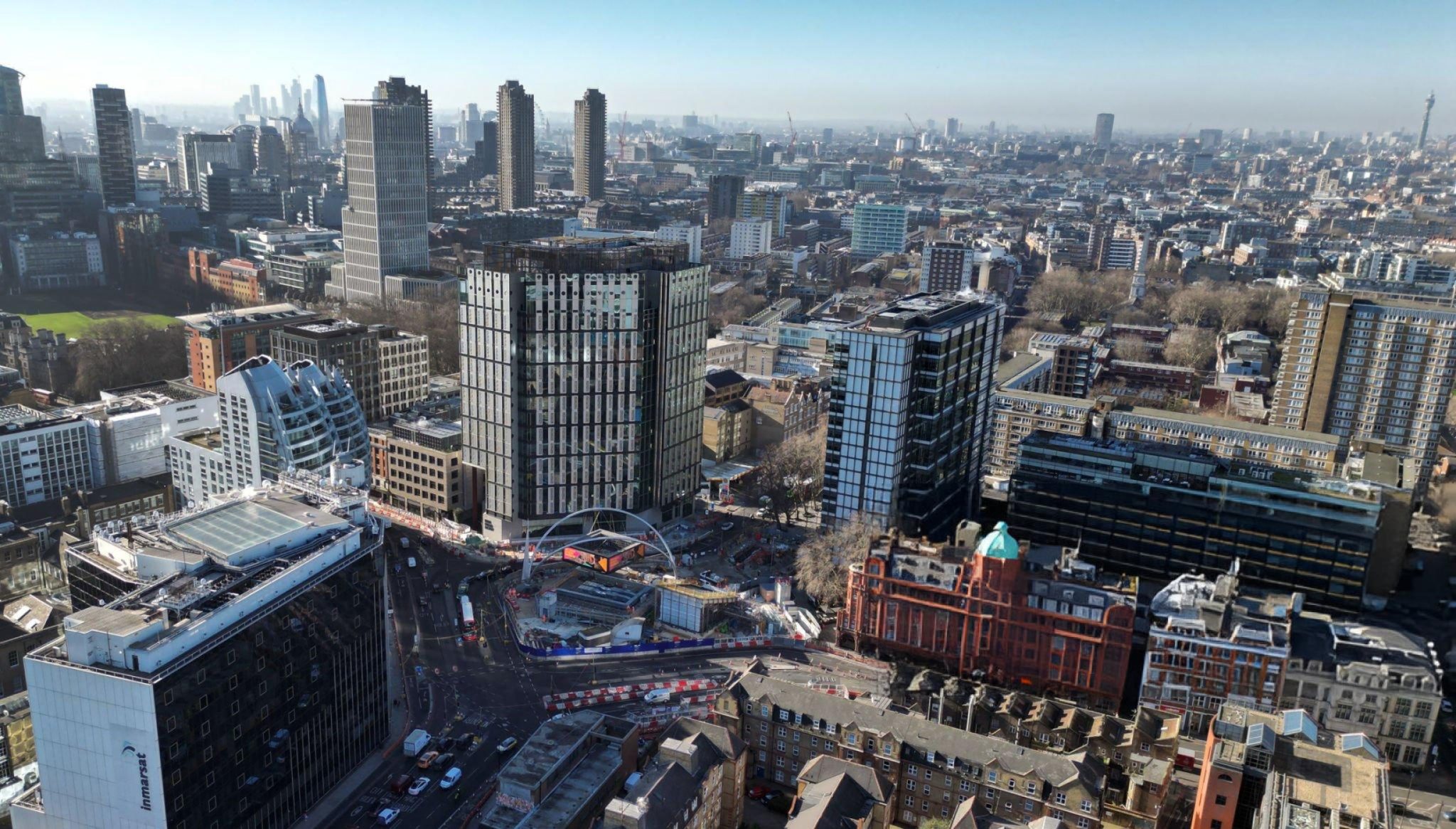Plans to construct a pair of residential towers on an overlooked slice of land in Shoreditch have won ‘support in principle’ from City Hall, as the capital continues to grapple with its ongoing housing shortage.
The proposed development, situated on a derelict triangular plot of land between the Great Eastern Main Line and the London Overground’s Windrush line, would bring two modern blocks to Fleet Street Hill, a stone’s throw from Brick Lane and Shoreditch High Street station.
If approved, the taller of the two buildings would reach twelve storeys and contain 220 co-living studio flats. These would come with shared amenities including a café, gym, lounge, communal kitchen and a roof terrace offering views across east London. The second building, slightly more modest at ten storeys, would provide 25 homes available at social rent levels — a mix of family-sized two, three and four-bedroom flats.
The application, submitted by developer Blue Coast Capital, describes the site as “underutilised and highly constrained”, yet ideally positioned to deliver much-needed housing in one of London’s most in-demand postcodes. The developers argue that their co-living model — individual studio flats with shared communal areas, professionally managed and built to high design standards — offers an answer to the capital’s failing private rental sector.
“Increasing numbers of people are being pushed into poor quality, unaffordable private rental homes,” the application notes. “Purpose-built shared accommodation, managed by a single operator, provides a viable and attractive alternative.”
Each co-living studio is designed to offer a double bed, en-suite shower room, kitchenette, storage, dining space and soft seating, blending private comfort with the benefits of community living.
However, while the scheme has attracted early support from the Mayor’s office, it does fall short of some of the key requirements set out in the London Plan — Sadiq Khan’s blueprint for the capital’s future development. In particular, only 29 per cent of the total floorspace is earmarked for affordable housing, missing the 35 per cent benchmark expected of all schemes on private land.
To help bridge this shortfall, Blue Coast Capital has pledged a financial contribution of just over £3 million (£3,006,071) to fund affordable housing construction elsewhere in the borough. City Hall officers noted that this approach, while not ideal, was “strongly supported” in the current climate, given the acute need for social housing.
The plan has also triggered concerns around environmental impact. A report from City Hall highlights that more information is needed before the scheme can fully comply with planning policy, including assessments on air quality, biodiversity, energy consumption and long-term sustainability.
Despite this, the GLA’s planning officers concluded that the development is “supported in principle”, suggesting that with appropriate adjustments and further information, full backing could be achieved.
The final decision now rests with Tower Hamlets Council, which is due to make its ruling by Monday 12 May. Locals will be watching closely, as the project could mark a significant change for the area — transforming an otherwise neglected parcel of land into a vibrant residential hub.
If approved, the development promises to bring new life to a forgotten corner of Shoreditch. But it also raises bigger questions about the balance between meeting housing targets and ensuring developments remain environmentally responsible and socially inclusive — debates that continue to define London’s ever-changing skyline.






